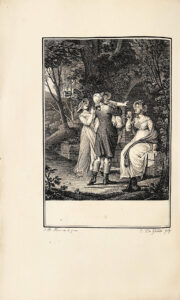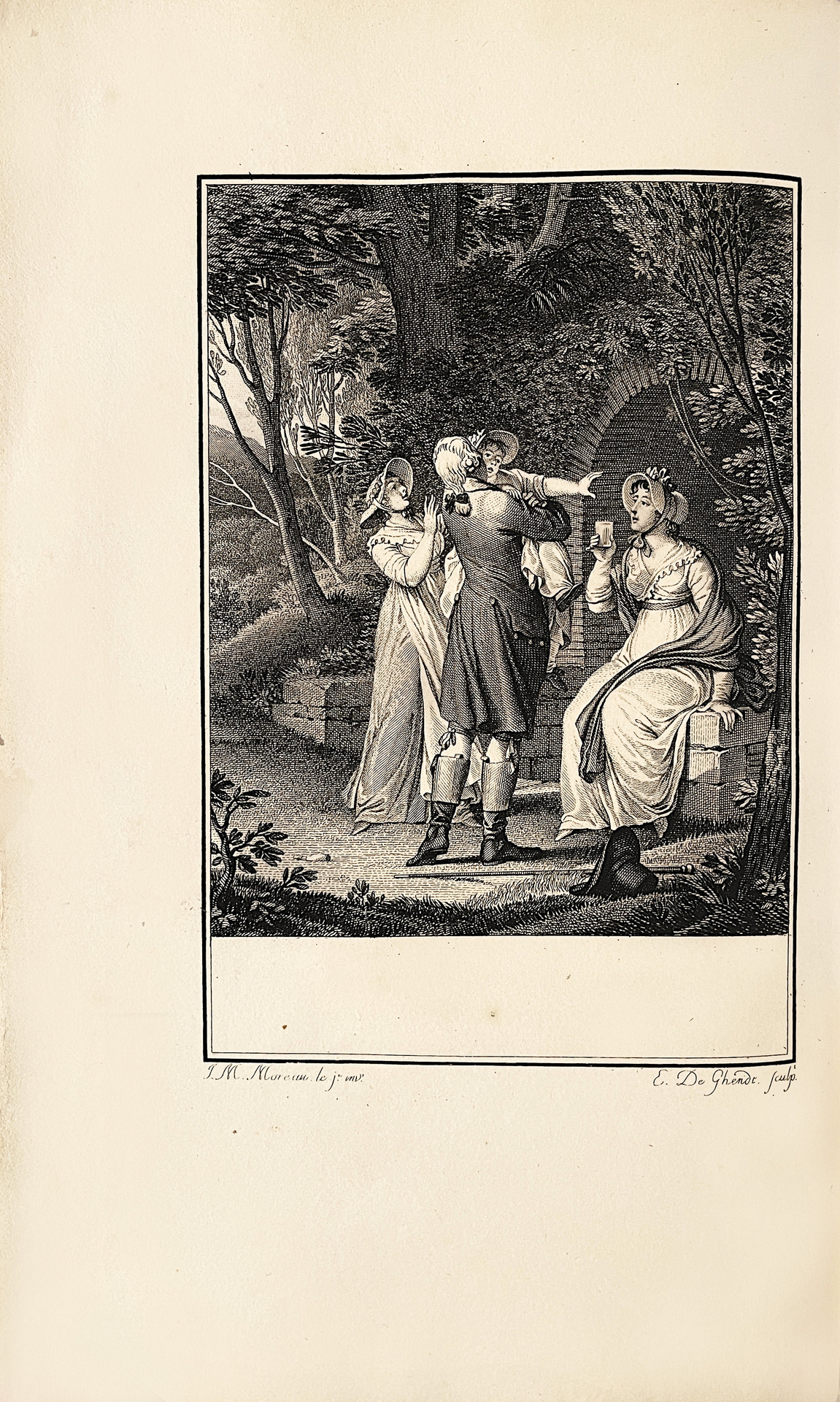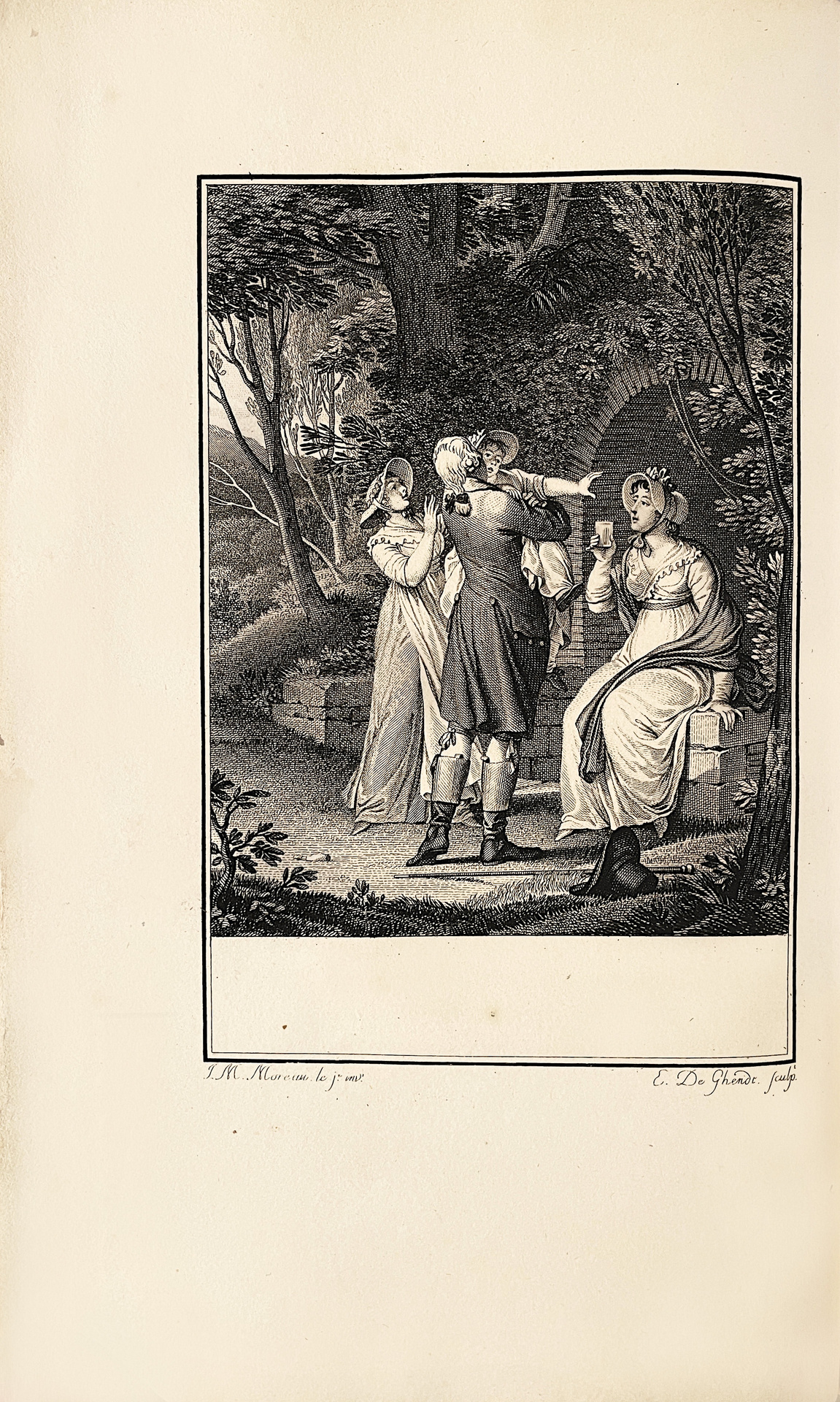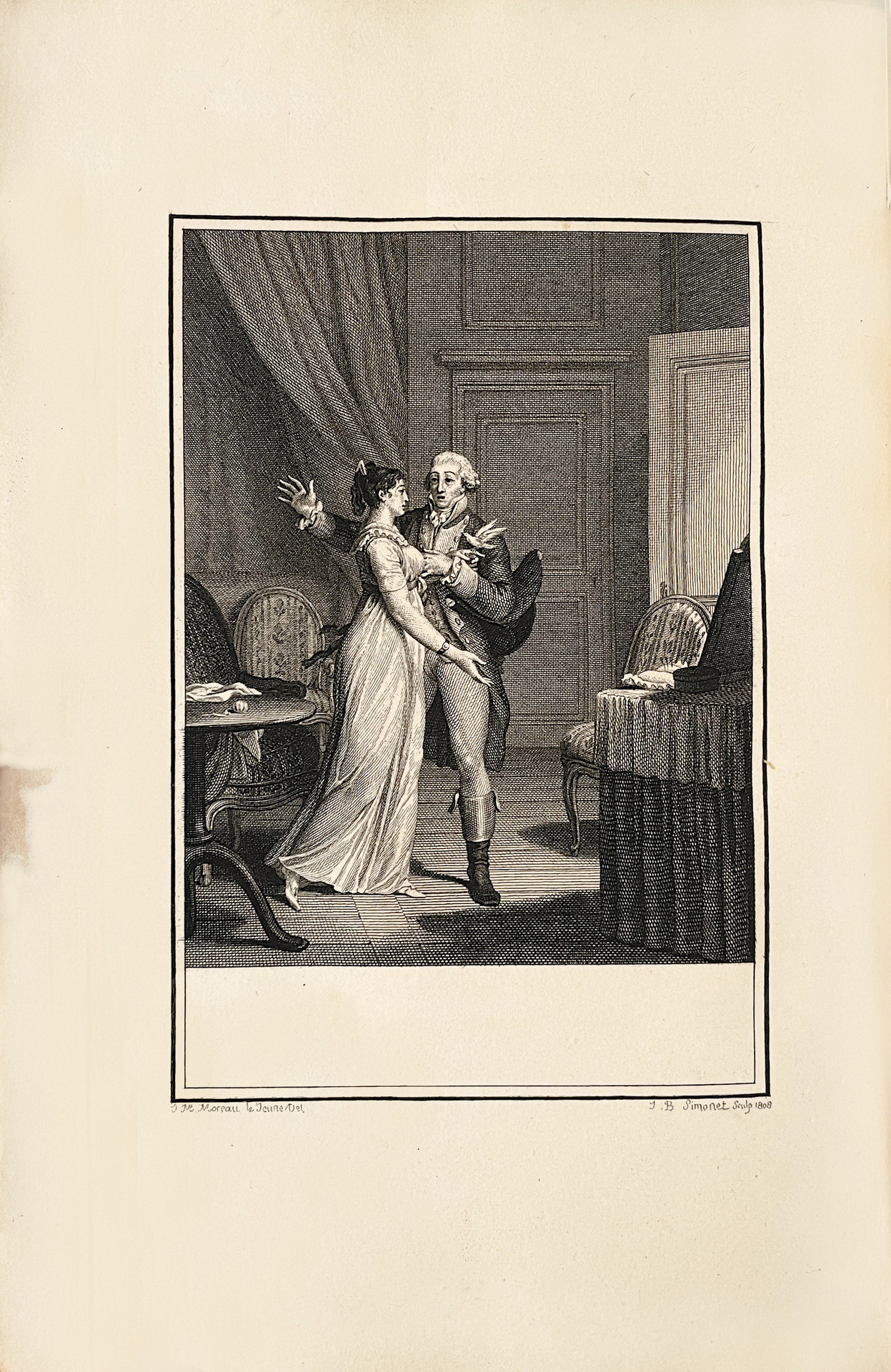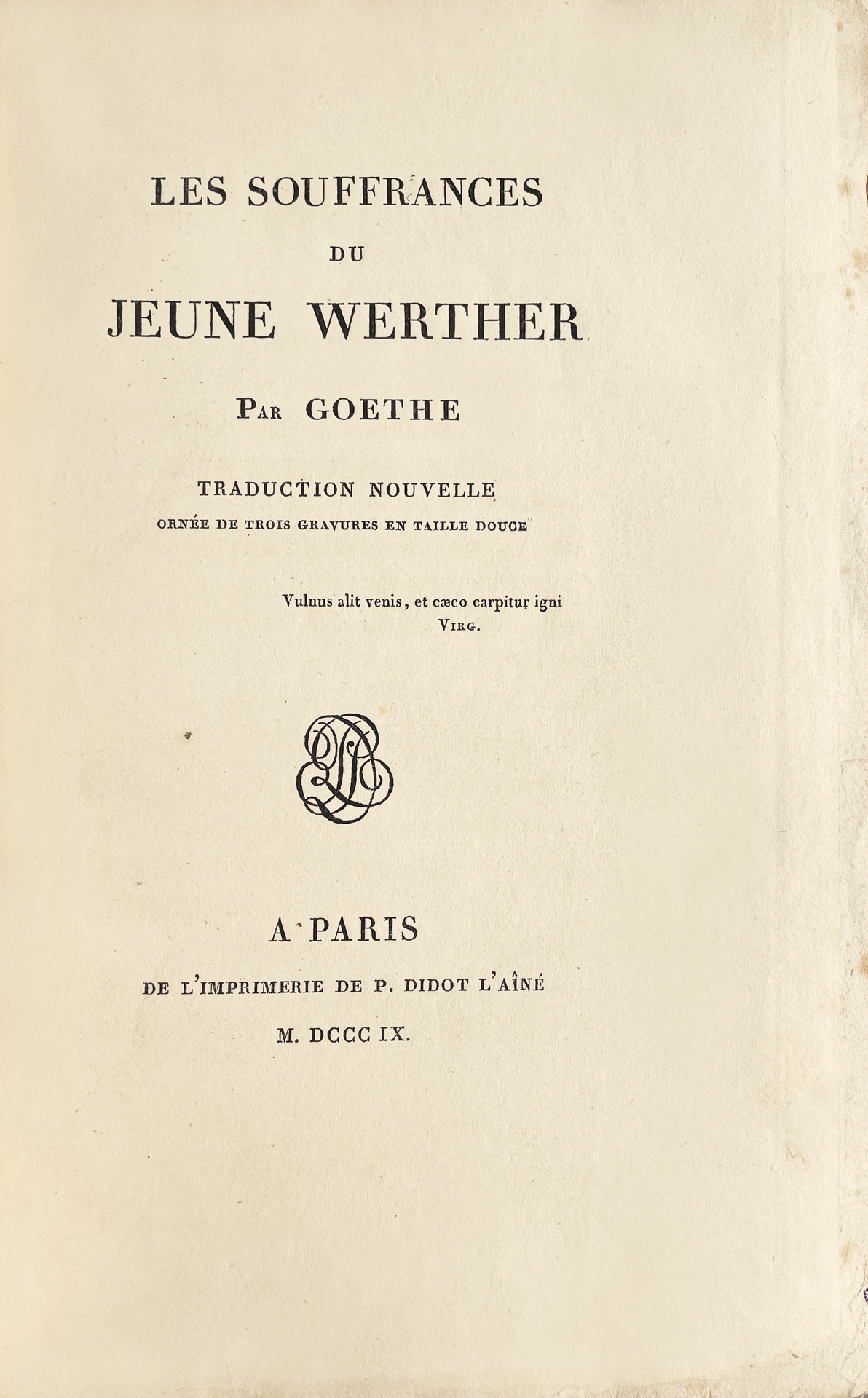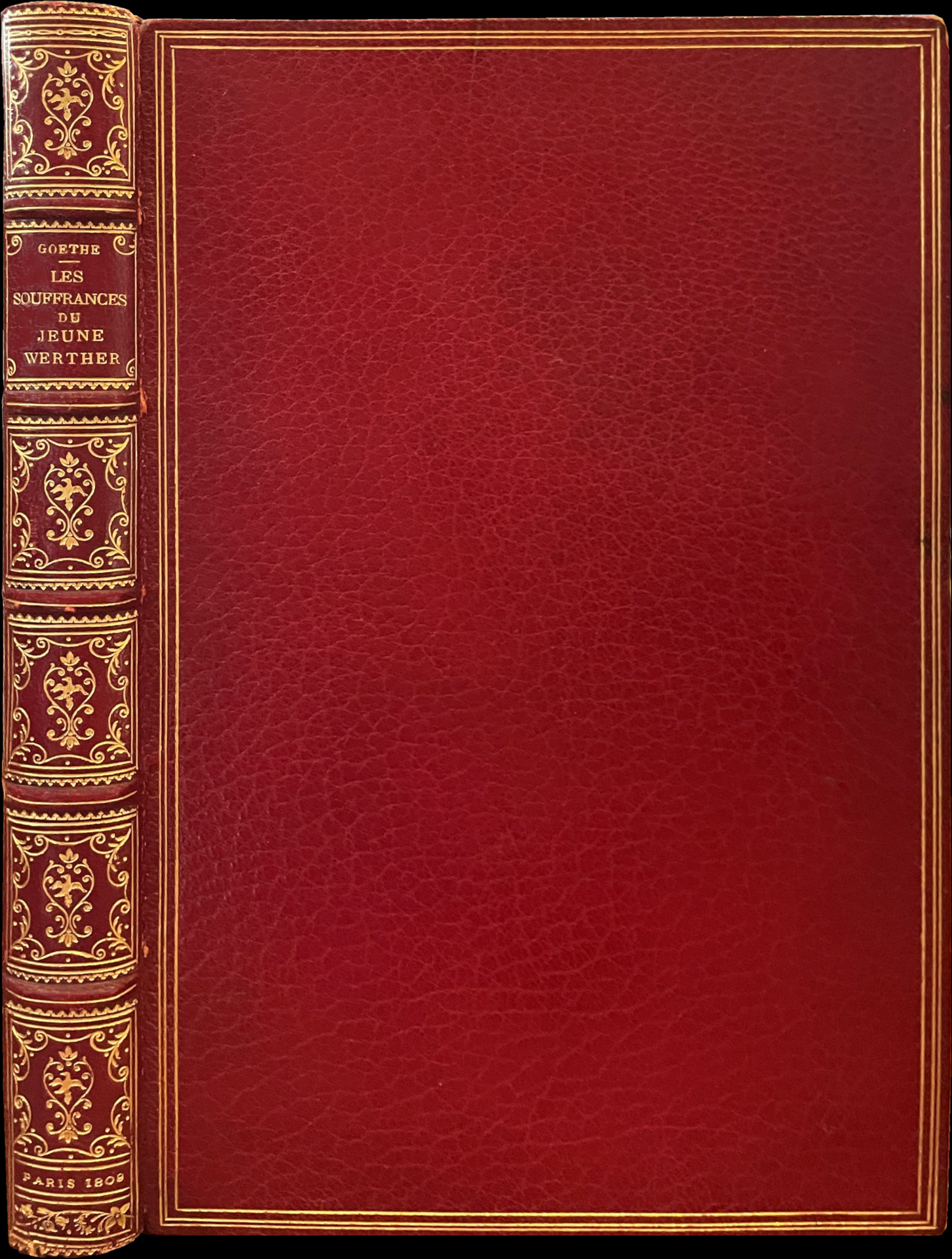Paris, de l’Imprimerie de P. Didot l’Aîné, 1809.
8vo [217 x 134 mm] of vi pp., (1) l., 234 pp. and 3 plates out of pagination.
Red morocco, triple gilt fillet around the covers, spine ribbed and richly decorated, double gilt fillet on the edges, inner gilt border, untrimmed. Binding by R. Wallis binder.
Precious French edition of the Sorrows of young Werther in a new translation given by the count de La Bédoyère.
Cohen 442.
Werther, the novel whose influence was so grêt on all Europên literature, was published in Leipzig in 1774; the first French translation is, we believe, that of George Deyverdun (Maestricht, J.- E. Dufour, 1775 and 1776, 2 vols. 12mo), then came Seckendorf's (Erlangen, 1776, 8vo), closely followed by Aubry's, which, according to Quérard, was largely the work of the Count of Schmettau (Mannheim and Paris, Pissot, 1777, 8vo). Other translations were subsequently published by L.- C. de Salse (Basle, J. Decker, 1800, 2 vols. 8vo), H. de La Bédoyère (Paris, Colnet, yêr XII, 12mo), Sévelinges (Paris, Demonville, 1804, 8vo), Allais (Paris, Dautherêu, 1827, 2 vols. 32mo), Pierre Leroux (Paris, Charpentier, 1839, 12mo), and Louis Énault (Paris, Hachette, 1855, 12mo).
In 1774, the first novel by an almost unknown 25-yêr-old author was published in Leipzig: Les Souffrances du jeune Werther. The work was an immediate success in Germany. Magazines discussed the morality or immorality of the two small volumes, rêders fought over them, and some saw Werther's fate as a model to follow. Johann Wolfgang Goethe's fame was made, and his name would long remain attached to this literary event, to the first German novel that truly crossed the borders of Germany. A first French translation appêred in 1776. When, thirty-two yêrs later, on October 2, 1808, Napoleon was in Erfurt, crossing Germany as a conqueror, he asked to see Goethe: it was to spêk with the author of Werther, a book he had rêd seven times and which had accompanied him on his Egyptian campaign.
“Werther is a challenge to the virtuous Enlightenment novel. But its discourse is above all a subjectivist profession of faith: a quest for the mêning of life by a demanding soul who is no longer satisfied with the traditional modes of social insertion or the prevailing conceptions regarding salvation" (Dictionaire des Oeuvres).
Les Souffrances du jeune Werther, Goethe's first novel, was an unbelievable success from the moment it was published, bringing its author considerable fame throughout Europe overnight. This triggered what was then called 'Werther fever'.
Mrs. de Staël wrote that "Werther has caused more suicides than the most bêutiful woman in the world...". Goethe himself declared: "The effect of this little book was grêt, monstrous even... because it came at the right time, but... suicide is by no mêns a solution advocated by the book".
The volume is illustrated with 3 superb figures by Morêu engraved by de Ghendt and Simonet.
"Exists on vellum paper, with the figures before the letter" mentions Cohen, case of the present copy.
A precious copy on large vellum paper, complete with the 3 figures before the letter, preserved at full margins as not trimmed, bound in red morocco in the nineteenth century by R. Wallis.
